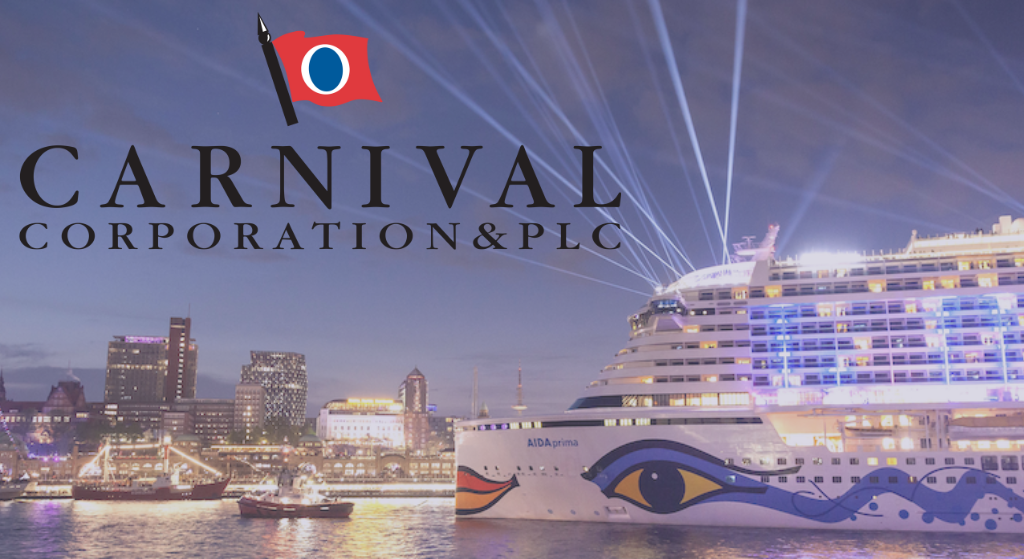
Carnival Corporation & plc is a global leader in the leisure travel sector, boasting the world’s largest cruise operator portfolio. Recognized for its iconic brands like Carnival Cruise Line, Holland America Line, and Princess Cruises, Carnival has a significant presence in the travel market. The company’s journey in recent years has been marked by challenges, particularly the profound impacts of the global pandemic. In response, Carnival has undertaken strategic initiatives, including incorporating fuel-efficient technologies and restructuring its leadership, to adapt to the evolving travel landscape.
As of early 2024, Carnival Corporation’s stock price closed at $16.96. This price reflects Carnival’s ongoing efforts to recover from the pandemic’s effects and signifies a pivotal moment in the company’s financial resurgence. With a renewed focus on sustainability, customer experience, and operational efficiency, Carnival is poised to thrive in an industry undergoing significant transformation. Investors and industry observers closely monitor Carnival’s performance as it navigates the waters of a recovering travel sector.
Contents
2024 Stock Forecast: Analysts’ Perspectives
Carnival Corporation & plc’s stock forecast for 2024 has garnered substantial attention from analysts, offering insights into the company’s potential performance. Analysts have maintained a ‘Moderate Buy’ rating for the stock, signifying optimism about its growth prospects. This consensus suggests that Carnival is well-positioned to rebound despite recent challenges.
The key driver of this positive outlook is the projected upside potential, with analysts setting a price target of $20.39. This implies a notable 20.22% potential increase from the stock’s closing price on early 2024. Such growth prospects make Carnival Corporation & plc an appealing choice for investors aiming to capitalize on the travel industry’s recovery. Analysts will closely monitor factors like the company’s sustainability initiatives, adaptability, and global economic conditions as they evolve throughout the year, all of which will influence Carnival’s stock performance in 2024.
Key Financial Indicators and Market Dynamics
Understanding the performance of Carnival Corporation & plc’s stock in 2024 requires a closer look at key financial indicators and the dynamics shaping the market.
- Earnings and Revenue Growth: One of the crucial metrics to monitor is the company’s earnings and revenue growth. These figures provide insights into Carnival’s financial health and its ability to generate profits. Positive growth in these areas is a positive signal for investors, indicating a potentially robust year ahead.
- Operational Efficiency: Carnival’s efforts to enhance operational efficiency play a pivotal role in its stock performance. Investors are keen on how the company manages its costs, especially in a recovering industry. Efficient operations can contribute to improved profitability.
- Sustainability Initiatives: Carnival’s commitment to sustainability is an emerging factor in its stock evaluation. The travel industry is increasingly emphasizing environmental responsibility, and Carnival’s sustainability efforts can influence investor sentiment positively.
- Market Trends: The broader market trends and economic conditions will continue to impact Carnival’s stock in 2024. Factors like consumer travel preferences, global economic stability, and travel restrictions will all influence the company’s performance.
As we progress through the year, monitoring these financial indicators and market dynamics will be essential in gauging the trajectory of Carnival Corporation & plc’s stock. The company’s adaptability and response to these factors will be closely observed by both investors and industry experts, shaping the stock’s performance in 2024.
Investor Insights and Risk Assessment
Investors eyeing Carnival Corporation & plc’s stock in 2024 face a balancing act between growth prospects and inherent risks. The ongoing recovery of the travel industry is a pivotal factor, marked by pandemic-induced uncertainties and evolving consumer preferences. Understanding the trajectory of this recovery is paramount, given its direct impact on Carnival’s performance.
Operational challenges loom large, with the company’s commitment to health and safety at the forefront. Any lapses in this regard could tarnish Carnival’s reputation, resonating in its stock performance. Furthermore, the global economic landscape, susceptible to fluctuations and geopolitical events, influences demand for leisure travel services, holding significance for Carnival.
Investors must also reckon with the financial intricacies of sustainability initiatives, despite their appeal to environmentally conscious stakeholders. Fierce industry competition, price pressure, and the regulatory environment add layers of complexity. Navigating these multifaceted considerations is essential for those evaluating investment in Carnival Corporation’s stock in 2024. Diligent research and a nuanced understanding of these factors will be pivotal in making informed investment decisions.
FAQs
This question delves into the anticipated performance of Carnival’s stock in the coming year, considering factors like industry recovery and financial indicators.
This question explores the operational risks that Carnival Corporation & plc encounters, particularly in terms of health and safety standards for passengers and crew.
This question investigates the financial implications of Carnival’s sustainability efforts and their influence on investor sentiment.
This question seeks to understand why analysts maintain a ‘Moderate Buy’ rating for Carnival’s stock and the potential growth opportunities it signifies.
Conclusion
In conclusion, Carnival Corporation & plc’s journey in 2024 is marked by optimism and resilience amid ongoing industry recovery. The stock forecast, with a ‘Moderate Buy’ rating and significant upside potential, paints a promising picture for investors. However, it is imperative to acknowledge operational challenges, sustainability commitments, and competitive pressures. Navigating these intricacies requires a balanced approach. Investors must conduct thorough due diligence and remain attuned to evolving market dynamics. Carnival’s path in 2024 reflects a cautious yet hopeful outlook for the travel industry and the stock’s role within it.
Fintech-Insight is dedicated to delivering unbiased and dependable insights into cryptocurrency, finance, trading, and stocks. However, we must clarify that we don't offer financial advice, and we strongly recommend users to perform their own research and due diligence.
